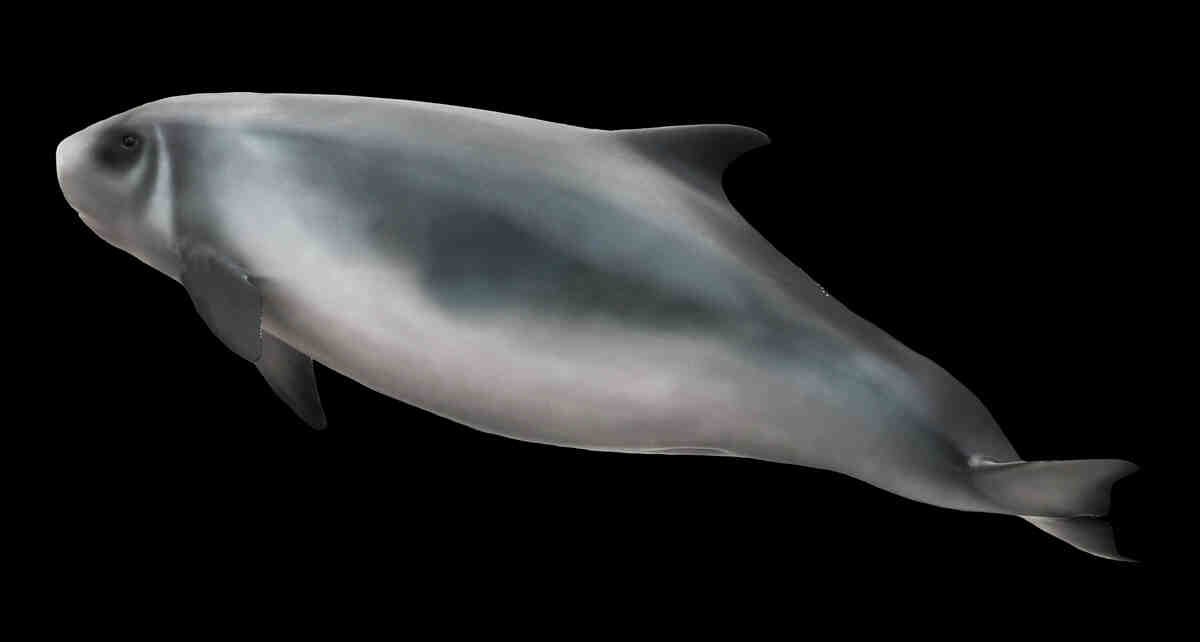Kogia breviceps
IUCN
LCBasic Information
Scientific classification
- name:Kogia breviceps
- Scientific Name:Kogia breviceps,Pygmy sperm whale
- Outline:Cetacea
- Family:Odontoceti S.Whale
Vital signs
- length:3.4m
- Weight:500kg
- lifetime:20-25years
Feature
The smallest whale
Distribution and Habitat
Distributed in tropical and temperate regions of the Pacific, Indian and Atlantic Oceans.
In China, they are mainly distributed near Keelung, Kaohsiung, Yilan and Pingtung in the South China Sea and Taiwan Sea.
Sperm whales live in deep waters outside the edge of the continental shelf in tropical and temperate oceans.
Appearance
The baby sperm whale is similar in size to a porpoise, with a thick head and trunk that tapers towards the tail, and a total body length of approximately 3.4m. The head is approximately square. The breathing hole is above the eyes and to the left of the midline of the head. The lower jaw is narrow, not reaching the sides of the head, and its front end is far behind the tip of the snout. The dorsal fin is located on the back half of the body, sickle-shaped, smaller, and its height is less than 5% of the total body length. The flippers are behind and below the crescent-shaped "false gills". The back of the body is blue-iron gray, the sides turn to lighter gray, and the belly is dark white or with some pinkish tones. There is a crescent-shaped light-colored spot on each side of the head, usually behind the eyes and in front of the flippers. This spot looks very much like the gill cover of a fish, so it is called a "false gill", or it can also be called a curved spot. T
Details
Pygmy sperm whale, foreign name, no subspecies.

Pygmy sperm whales move alone or in small groups, sometimes up to about 6 in a group. This species is an oceanic warm-water species. It is timid and slow-moving. It swims at a speed of about 3 miles per hour. The mist column it emits when breathing is unclear. When it floats up, it is exposed from the middle of its back to its dorsal fin. Sometimes it appears to float slowly, but quickly dives back into the water. Occasionally, it jumps out of the water vertically with its whole body, and then falls into the water with its tail first or belly hitting the water. It does not like to follow ships. It occasionally jumps out of the water vertically, and then falls into the water with its tail down and its head up. Sometimes it floats motionlessly on the water, with its head and back above the water and its tail hanging in the water.
The small sperm whale mainly feeds on cephalopods, followed by oceanic crustaceans and fish. In the food of the small sperm whale along the coast of Taiwan, 18 species of squid belonging to 9 families were found, mainly Toyama armed squid, purple-backed squid and peacock squid. The posterior part of the intestine expands to form a long balloon-like structure filled with reddish-brown fluid. When a sperm whale is frightened or stranded, it discharges chocolate-colored fluid through its anus. The discharged fluid forms a cloud of mist in the water that can mislead vision and smell. Some researchers believe that this is an escape mechanism, similar to the mechanism by which squid discharge ink.
Sperm whales mate in the summer, with a gestation period of 9-11 months, and give birth in the spring, with one calf per litter, and a lactation period of about 1 year. The smallest female sperm whale that has reached sexual maturity is 2.66m long, and the largest female is 3.30m; males reach sexual maturity at 2.70m, and the largest male is 3.80m; the body length of newborn whales is about 1.20m.
The population of sperm whales is not scattered. Due to the long dives and dorsal fins of the pygmy sperm whale, there is no specific data on the global population of this species. Their frequent activities in some areas (such as Florida and South Africa) indicate that they may not always be as rare as witnesses think. The development trend of this population is unknown. In short, the number of pygmy sperm whales in nature is very rare and they should be protected.
Listed in the 2012 Red List of Endangered Species of the World Conservation Union (IUCN) ver 3.1-Data Deficient (DD).
Listed in the second level of the List of Wild Animals under National Key Protection in China.
Protect wildlife and eliminate game.
Maintaining ecological balance is everyone's responsibility!








